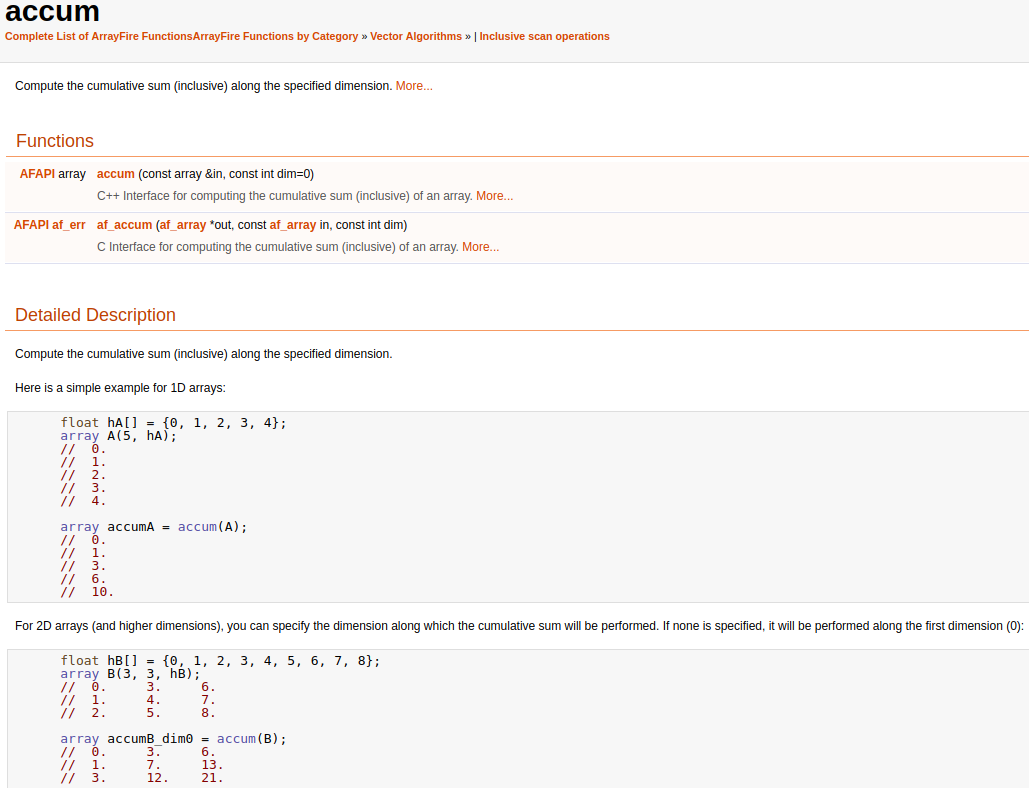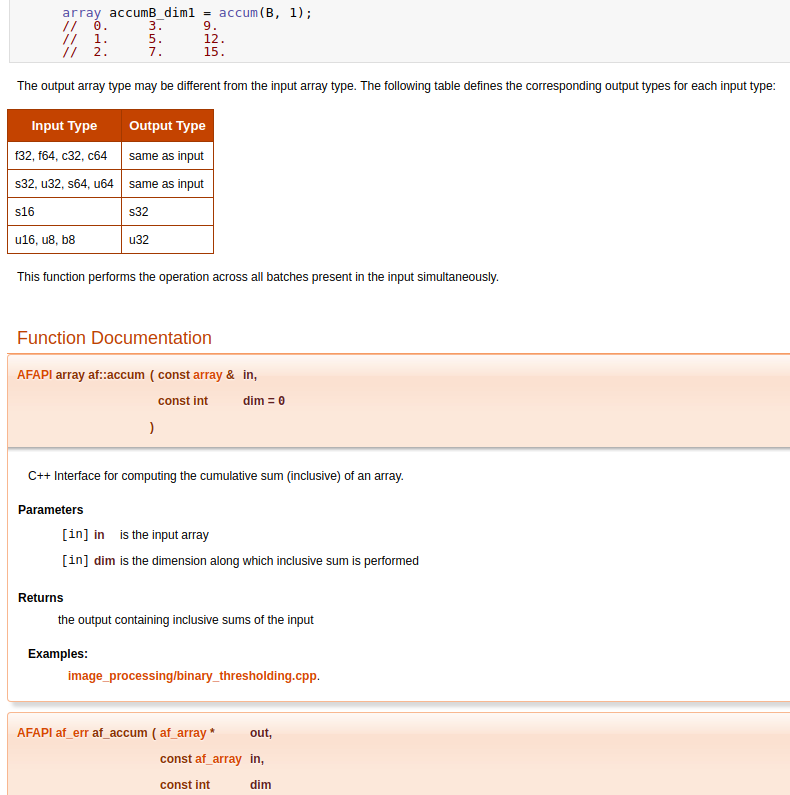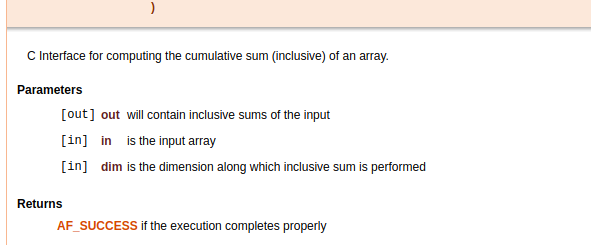-
Notifications
You must be signed in to change notification settings - Fork 547
Fix and improve af::accum documentation #2298
New issue
Have a question about this project? Sign up for a free GitHub account to open an issue and contact its maintainers and the community.
By clicking “Sign up for GitHub”, you agree to our terms of service and privacy statement. We’ll occasionally send you account related emails.
Already on GitHub? Sign in to your account
Conversation
docs/details/algorithm.dox
Outdated
| \snippet test/scan.cpp ex_accum_1D | ||
|
|
||
| For 2D arrays (and higher dimensions), you can specify the dimension along which | ||
| the cumulative sum will be performed. If none is specified, it will be performed |
There was a problem hiding this comment.
Choose a reason for hiding this comment
The reason will be displayed to describe this comment to others. Learn more.
I think computed/computed sounds better than performed.
There was a problem hiding this comment.
Choose a reason for hiding this comment
The reason will be displayed to describe this comment to others. Learn more.
Yeah thanks, not sure why I wasn't consistent here, I did use "compute" in the brief description
docs/details/algorithm.dox
Outdated
|
|
||
| For 2D arrays (and higher dimensions), you can specify the dimension along which | ||
| the cumulative sum will be performed. If none is specified, it will be performed | ||
| along the first dimension (0): |
There was a problem hiding this comment.
Choose a reason for hiding this comment
The reason will be displayed to describe this comment to others. Learn more.
Can you please verify if it dimension defaults to 0 or the first non-singleton dimension.
There was a problem hiding this comment.
Choose a reason for hiding this comment
The reason will be displayed to describe this comment to others. Learn more.
Yeah sure, so I tried it:
array s = iota(dim4(1, 4));
af_print(s);
af_print(accum(s));s
[1 4 1 1]
Offset: 0
Strides: [1 1 4 4]
0.0000 1.0000 2.0000 3.0000
accum(s)
[1 4 1 1]
Offset: 0
Strides: [1 1 4 4]
0.0000 1.0000 2.0000 3.0000
Here dim1 is the first non-singleton dimension, and it looks like accum doesn't do anything to it. So I think it defaults to dim0. I should probably note though that this defaulting behavior is only on the C++ API.
There was a problem hiding this comment.
Choose a reason for hiding this comment
The reason will be displayed to describe this comment to others. Learn more.
Sounds good.
PS. Defaults are only available for C++ API.
There was a problem hiding this comment.
Choose a reason for hiding this comment
The reason will be displayed to describe this comment to others. Learn more.
This looks like a bug
There was a problem hiding this comment.
Choose a reason for hiding this comment
The reason will be displayed to describe this comment to others. Learn more.
Were you expecting the default to be -1 ? I was, but the code has 0 as default right now for whatever reason.
There was a problem hiding this comment.
Choose a reason for hiding this comment
The reason will be displayed to describe this comment to others. Learn more.
I expect it to work on the first non-zero dimension. Does -1 do that? If it does then yes it should be the default. If it doesn't then it should be implemented.
There was a problem hiding this comment.
Choose a reason for hiding this comment
The reason will be displayed to describe this comment to others. Learn more.
It should be fixed in a different PR
There was a problem hiding this comment.
Choose a reason for hiding this comment
The reason will be displayed to describe this comment to others. Learn more.
-1 usually represents the first non-singleton dimension, this was the convention from the days of v2.x and we use it for most functions in v3.x also I believe.
include/af/algorithm.h
Outdated
|
|
||
| \param[in] in is the input array | ||
| \param[in] dim The dimension along which exclusive sum is performed | ||
| \return the output containing exclusive sums of the input | ||
| \param[in] dim is the dimension along which inclusive sum is performed |
There was a problem hiding this comment.
Choose a reason for hiding this comment
The reason will be displayed to describe this comment to others. Learn more.
Similar to my first comment, perform is mostly with subjective contexts. Perhaps calculated or computed.
include/af/algorithm.h
Outdated
| \param[in] in is the input array | ||
| \param[in] dim The dimension along which exclusive sum is performed | ||
| \param[in] dim is the dimension along which inclusive sum is performed |
There was a problem hiding this comment.
Choose a reason for hiding this comment
The reason will be displayed to describe this comment to others. Learn more.
Same as my previous comment about perform
|
@umar456 also requested that docs include a formula for the inclusive sum in the docs. Working on it. |
cdc4732 to
d69a4bb
Compare
docs/details/algorithm.dox
Outdated
|
|
||
| For 2D arrays (and higher dimensions), you can specify the dimension along which | ||
| the cumulative sum will be performed. If none is specified, it will be performed | ||
| along the first dimension (0): |
There was a problem hiding this comment.
Choose a reason for hiding this comment
The reason will be displayed to describe this comment to others. Learn more.
It should be fixed in a different PR
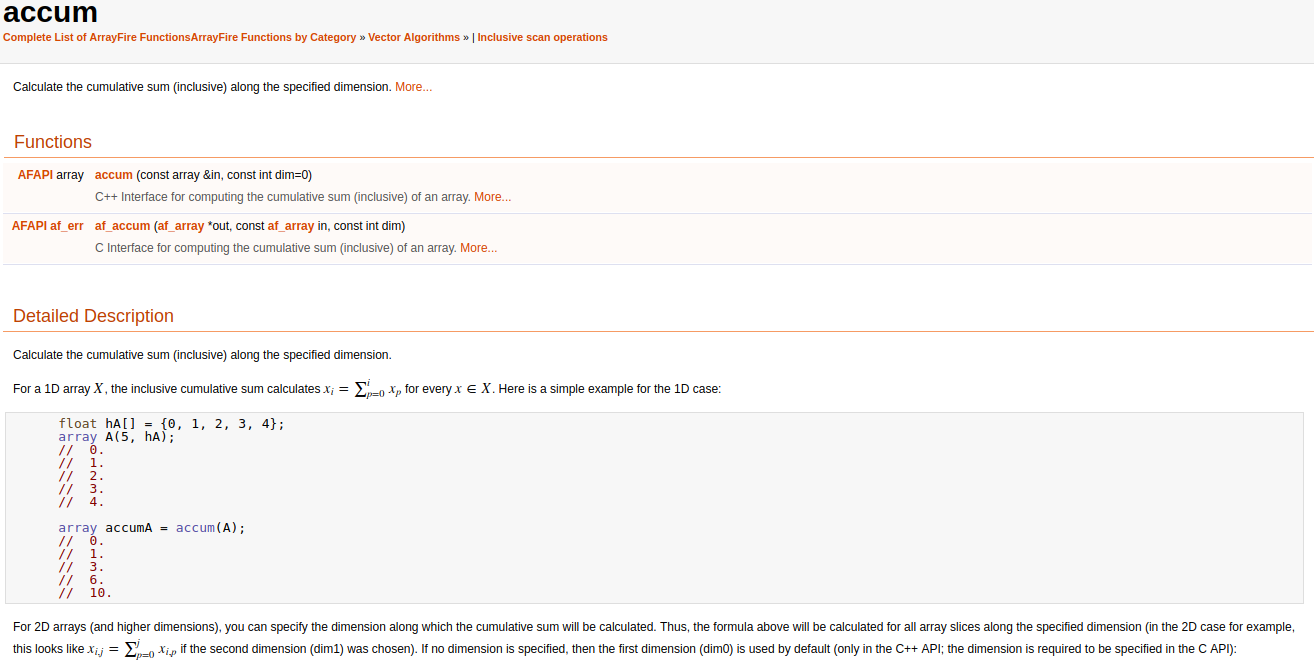
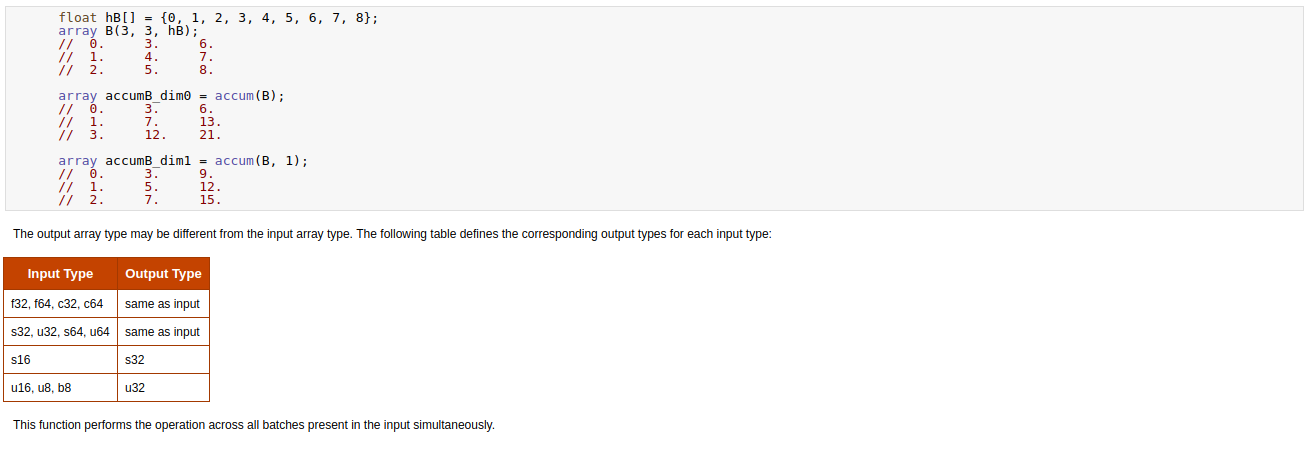
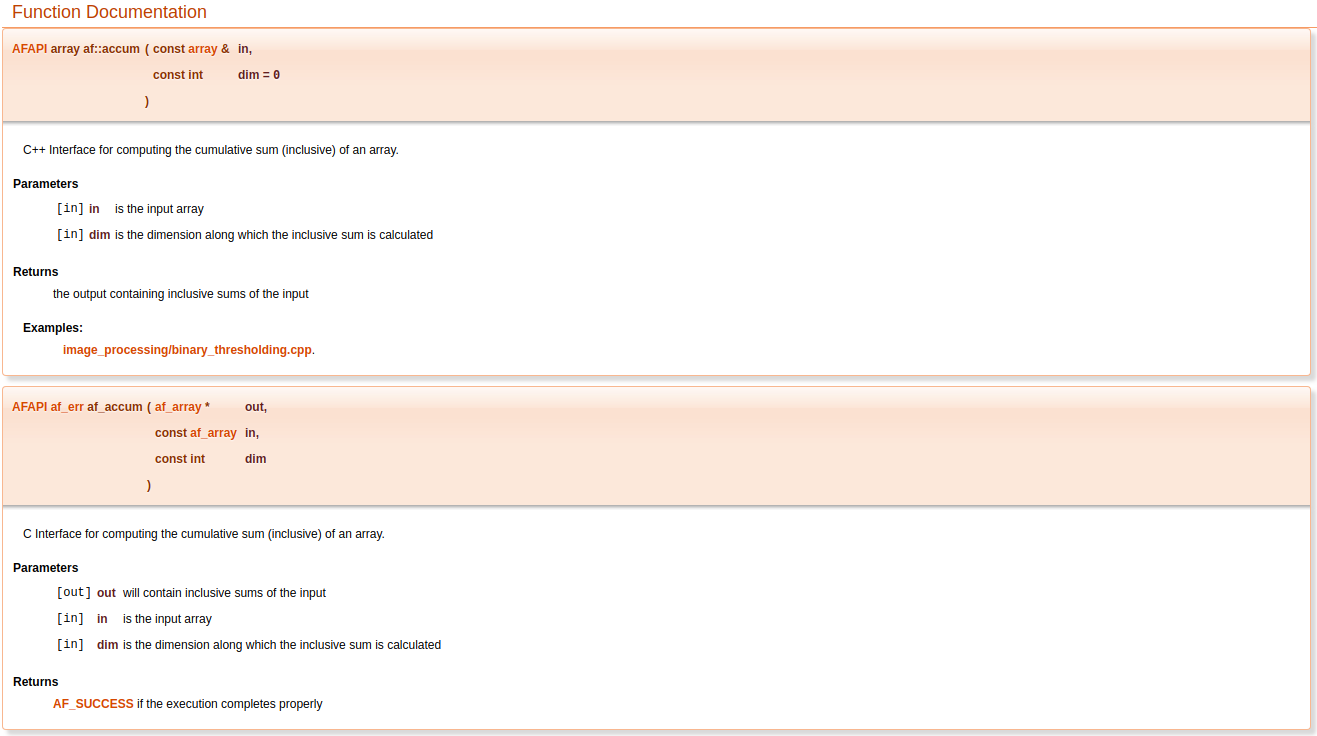
The accum docs has some typos, such as saying "exclusive sum" on the function docs while it is really an inclusive sum scan. Also I think the brief description needs to say "cumulative" somewhere - "inclusive sum (scan)" didn't really ring a bell to me until I started learning parallel programming (a Google search on "inclusive sum" also doesn't immediately get clear results that it means inclusive sum scan). I added an example too just so it's clearer what it does.
Here are some snapshots of the docs after the change:
